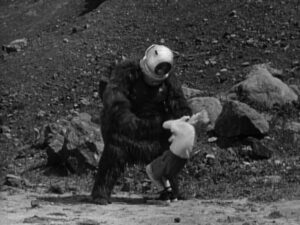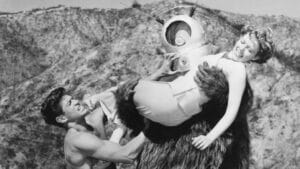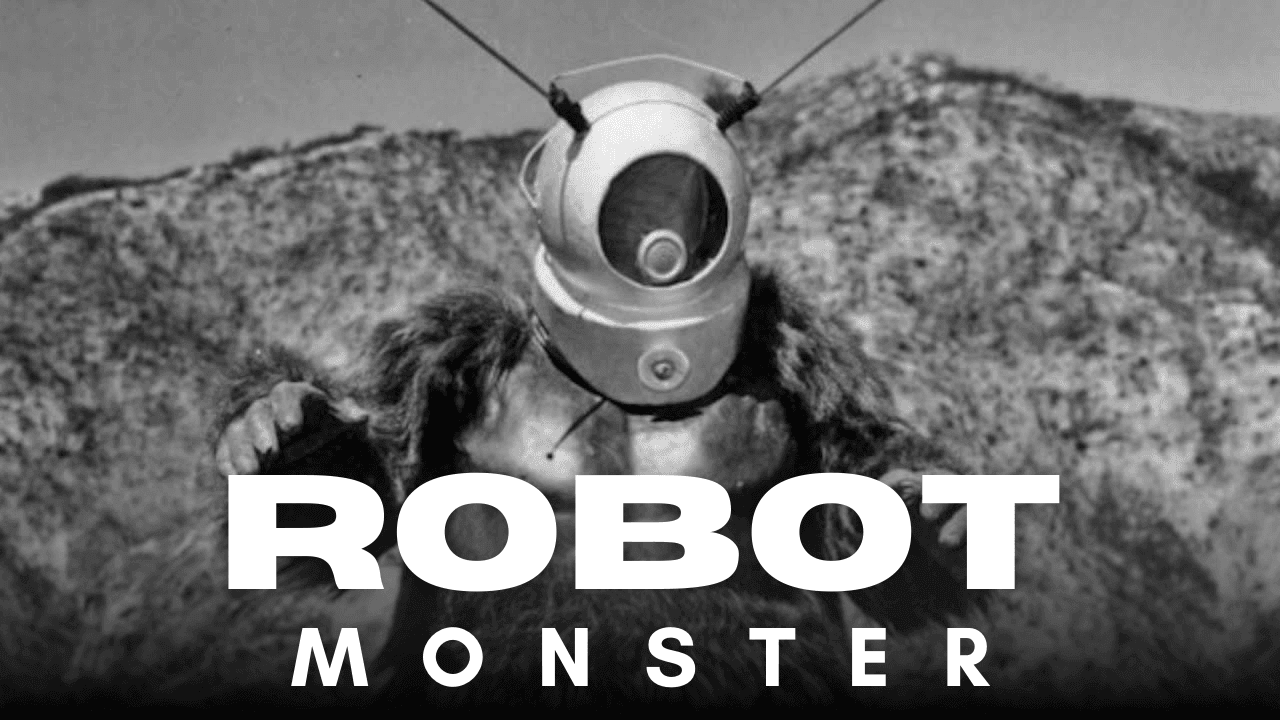A Cult Classic of Unintentional Brilliance – Robot Monster (1953)
Introduction: The Legacy of Robot Monster

Few films can claim to be as notoriously captivating as Robot Monster (1953).
This bizarre yet endearing B-movie has entertained audiences for decades with its outlandish premise, unforgettable dialogue, and sheer audacity in storytelling.
Directed by Phil Tucker, this low-budget science fiction spectacle embodies the essence of 1950s B-movie cinema, offering a mix of horror, sci-fi, and unintentional comedy that has secured its place in cult movie history.
Plot Overview: The Unfolding of Ro-Man’s “Master Plan”
The film opens with Earth in ruins, having succumbed to an attack by the alien entity known as Ro-Man. Humanity has been nearly wiped out, save for a small group of survivors, including Alice, her family, and a couple of determined scientists. Ro-Man, who bizarrely resembles a gorilla with a space helmet, takes orders from his superior via a futuristic (yet oddly familiar) television screen. As he tracks the remaining humans, an unexpected twist emerges—Ro-Man begins to develop feelings for Alice, throwing his mission into disarray.
The movie’s climax delivers a surreal mix of action, melodrama, and philosophical musings, culminating in an ending that leaves audiences both bewildered and entertained.
Cast and Characters
George Nader as Roy
George Nader, known for his roles in 1950s and 60s cinema, delivers a performance that elevates the film beyond its campy roots. Nader went on to have a steady career in Hollywood, starring in films such as Sins of Jezebel (1953) and later transitioning into writing.
Claudia Barrett as Alice
Claudia Barrett’s portrayal of Alice provides a strong, determined female lead in a film otherwise dominated by its eccentric antagonist. Barrett enjoyed a career in television and film throughout the 1950s before stepping away from Hollywood.
Supporting Cast:
-
Selena Royle as Mother
-
John Mylong as The Professor
-
Gregory Moffett as Johnny
-
Pamela Paulson as Carla
-
George Barrows as Ro-Man (Suit Actor)
-
John Brown as the Voice of Ro-Man
The “Unique” Special Effects and Cinematic Style

The true charm of Robot Monster lies in its ambitious yet hilariously inadequate production design.
From the now-iconic Ro-Man suit (a gorilla costume with a diving helmet) to the bubble machine meant to represent an advanced alien technology, the film’s commitment to its absurd vision is both commendable and comical.
The use of Bronson Canyon for most of the film’s setting gives it an eerie, post-apocalyptic feel, even though it was a commonly used filming location for many low-budget productions of the time.
The Dialogue: Campy Gold
Lines such as “I, Ro-Man, observe!” and “You… human!” have become legendary in cult cinema. The script, filled with overwrought monologues and robotic existentialism, only adds to the film’s charm, making it a favorite for lovers of “so-bad-it’s-good” cinema.
Why Robot Monster Still Matters
Despite its laughable execution, Robot Monster is a significant artifact of independent filmmaking in the 1950s. It reflects an era where filmmakers, armed with limited budgets and grandiose ideas, pushed the boundaries of storytelling. The film serves as a reminder that creativity often thrives under constraints, and even the most bizarre projects can find an audience.
Conclusion: A Must-Watch for Cult Film Fans
Whether you’re a die-hard fan of B-movies or a newcomer looking for a laugh, Robot Monster is a must-watch. Its unintentional humor, memorable performances, and sheer absurdity make it one of the most beloved cult classics of all time. Grab some popcorn, invite some friends, and prepare for an experience unlike any other!



